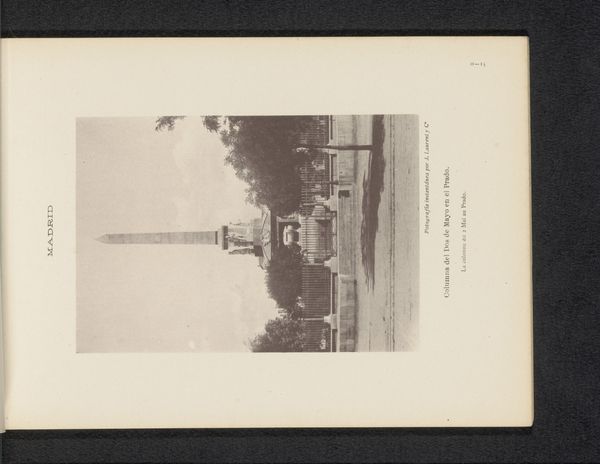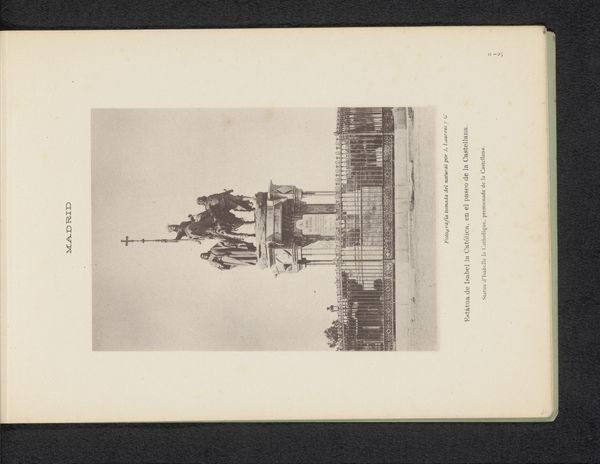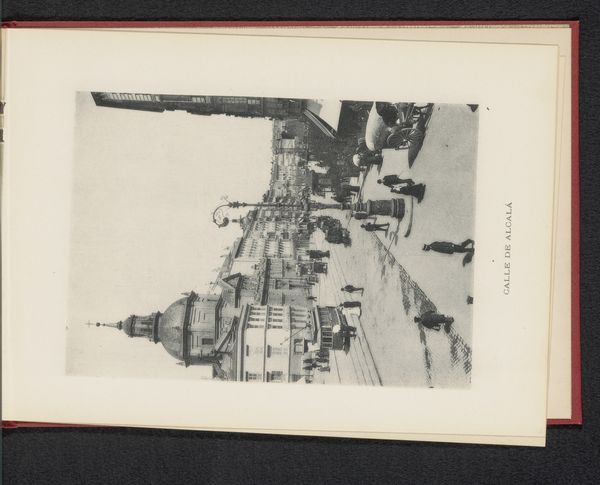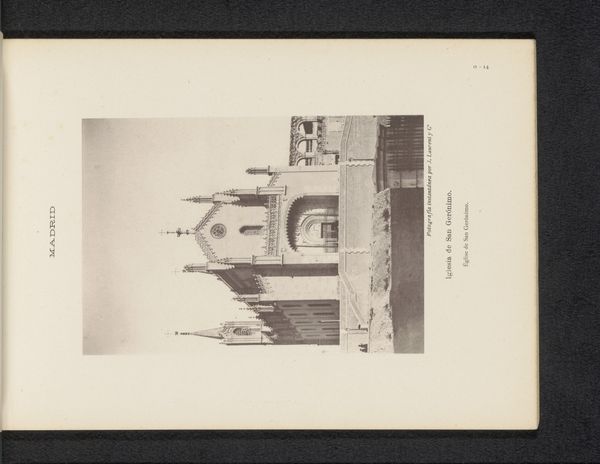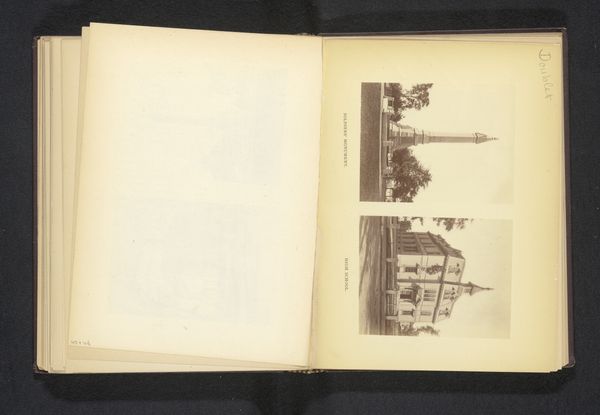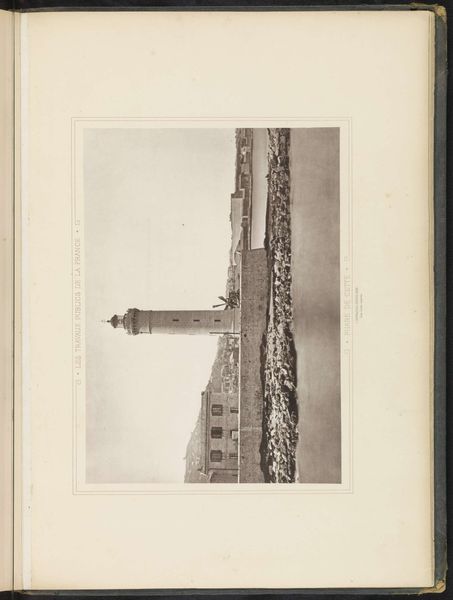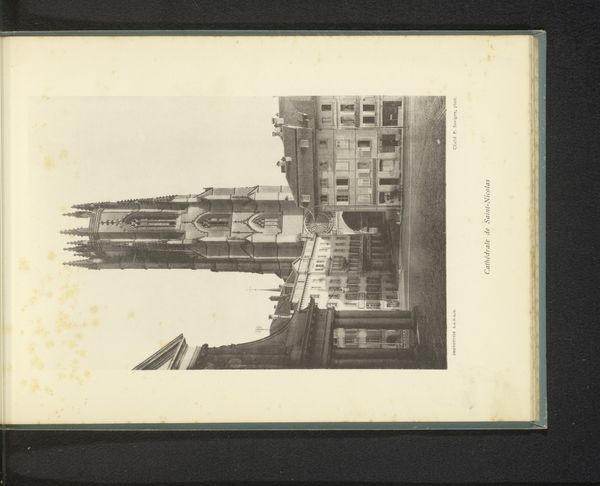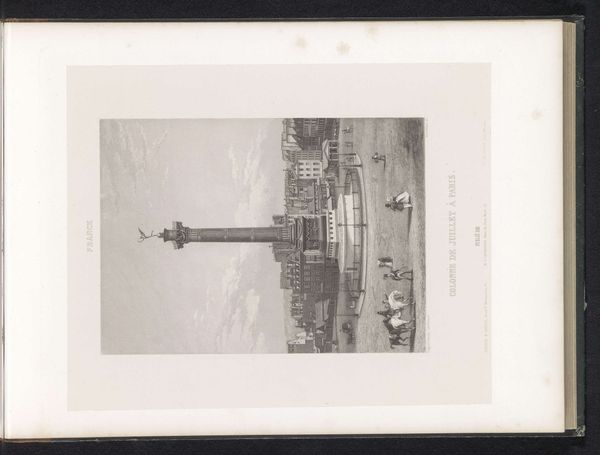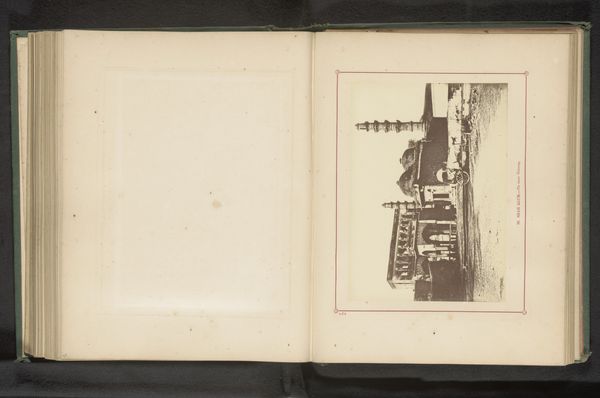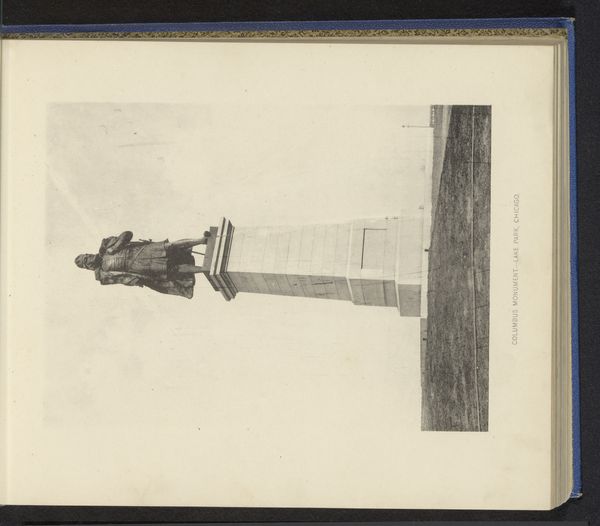
Dimensions: height 170 mm, width 109 mm
Copyright: Rijks Museum: Open Domain
Editor: This photogravure print, created by Hauser y Menet before 1890, captures the Columbus Monument in Barcelona. It's such a stark image, almost ghostly. Given your materialist approach, what catches your eye here? Curator: I’m particularly struck by the photograph’s mediation of this monument. We’re not looking at the thing itself, but at a mass-produced image designed for consumption. What choices influenced its making? Editor: What do you mean by choices? Curator: Well, think about it: why a photograph instead of, say, a drawing? Photography in this era implied a kind of objectivity, but even in selecting a viewpoint and a printing method, the artist shaped the viewer's experience, contributing to a particular understanding of the monument, it's scale and intended context. The photogravure process itself--how does that impact the meaning of this image? Editor: That's interesting. It's not just about documenting the monument, it's about creating a particular experience of it. So, this photogravure itself becomes a kind of commodity? Curator: Exactly! The image circulates, reproduces, and disseminates particular narratives. I also find the industrial backdrop interesting in contrast with the neo-classicism of the monument, raising questions about the politics and values encoded in civic spaces. What narratives are prioritised by the commissioner and how do materials reveal them? Editor: I see it now! So, by analyzing the means of production and distribution of this photograph, we gain a deeper understanding of the monument’s intended purpose and how its meaning was constructed and circulated. It’s more than just a picture of a monument. Curator: Precisely. It’s about understanding the image as a material object embedded within a specific historical and social context. Thank you, that's certainly got me thinking differently about seeing!
Comments
No comments
Be the first to comment and join the conversation on the ultimate creative platform.


